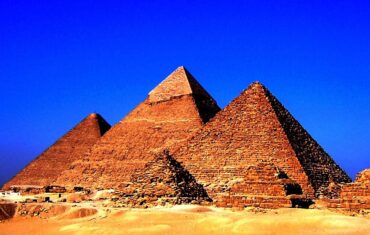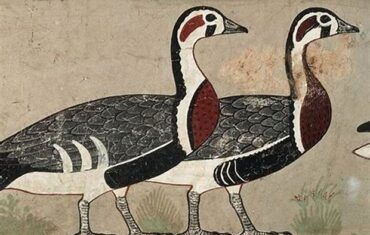Qubbet el-Hawa is a site on the western bank of the Nile, opposite Aswan. The name is derived from the dome of the tomb of an Islamic sheikh, but archaeologically, it is usually understood as referring to the site of the tombs of the officials lined up on artificial terraces below the summit of the Nile bank upon which the Islamic tomb stands.
The Tombs of the Nobles date mainly from the Old Kingdom and provide an insight into the burial traditions of Upper Egyptian Nome 1 during the later Old Kingdom. The tombs include the famous tomb of Harkhuf. Others belong to Sabni, Ishemai or Heqaib. There are also some later tombs, from the Middle Kingdom and New Kingdom. Among the most important tombs are those of the expedition leaders (like Harkhuf) despatched to distant lands to negotiate the acquisition of foreign goods for the Egyptian court. During the Middle Kingdom, a minor sanctuary for one (or more) of these leaders (designated with the appelation “Heqa-jb”) was prominent in the town at Elephantine. Excavation work continues.
According to the Ahram Online, in January 2020, six mastaba graves, two shaft graves and one rock-cut tomb with several burials dating back to the Old Kingdom were uncovered by Qubbet El-Hawa Research Project led by Martin Bommas. Mostafa Vaziri said that one of the tombs was very well preserved, he also added that some of the graves were 190x285cm, while others were 352x635cm. Though entrance of one of the tombs with a wall of carefully laid mud bricks had blocked by the tomb constructors, that specific grave had been looted by thieves who broke into the tomb through the back wall in ancient times
Since 2008, the University of Jaén project has focused on the study and excavation of tomb QH33, where the governors of Elefantina Heqaib III and his brother and successor, Ameny-Seneb (1810-1790 BC), who were contemporaries of the penultimate pharaoh of the XII Dynasty, Amenemhat III (1818-1773 BC), were buried. As a result of these archaeological works, new tombs have been brought to light and are in the process of being excavated (QH34aa and QH34bb). Once the excavations have made sufficient progress in the burial complex of the two governors, since 2015, the project has expanded the study area. The objectives focus on the excavation of the burial wells of the XII Dynasty: Sarenput I (QH36), QH32 (reused in the New Kingdom by a certain Aku), Sarenput II (QH31) and Heqaib II (QH30). The information provided by these works will allow to know in greater detail the ruling family of Elefantina during this period, so that new data will be provided on the inner workings of the dynasties of the provincial governors.



